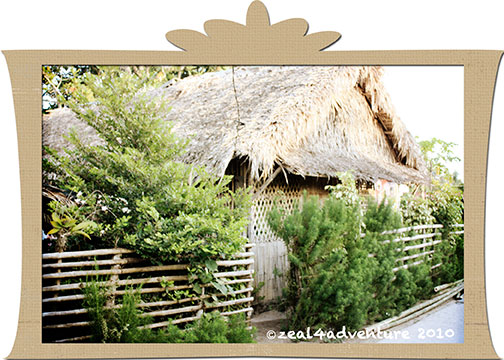Climbing, wading and swimming under the scorching heat can be tiring. I felt like a nap, which was what I did as soon as we arrived at our resort.
I was practically falling asleep on the habal-habal. 🙂
Not even the halo-halo stand attracted me to stop. All I could think of is that bed and our air-conditioned room. But as soon as I woke up, there was nothing I want more than to devour on my all-time heat-quencher fave
– nothing like a delightful treat of homemade preserves topped with smoothly crushed ice and some milk to wake me up. Bliss.
Halo-halo, the country’s most popular summer refreshment, has a different version in each municipality, each claiming to be the best. So I find enjoyment in trying the different halo-halo around the country. And the best ones are always those sold on the streets.
After that wonderful treat, I was ready to get to know the town. A relatively clean town, I noticed.
The houses are a combination of the traditional nipa huts and concrete 2-storey structures such as that of our resort.
They were a friendly bunch of people; even the kids are not shy at all.
 But he does not seem very happy, does he? (heehee!)
But he does not seem very happy, does he? (heehee!)
While walking around town, I befriended a girl with the same name as mine, perhaps around 12 years old. She walked beside me and we started conversing, she told me stories of each “big” house we passed. Some were owned by balibayans but mostly by foreigners who have married a local. Jennifer confessed that she wanted to practice her English because she hopes to marry a foreigner someday so she can live in a “big” house as well. I tried to impress on her the value of education and once she has that, she will not need a “foreigner” in shining armor to sweep her off her feet. 😉
The rest of the afternoon was spent on the terrace of Biri Resort, sipping ice-cold beer and watching the sunset. Uh-huh… simple pleasures at its finest.


















































































































